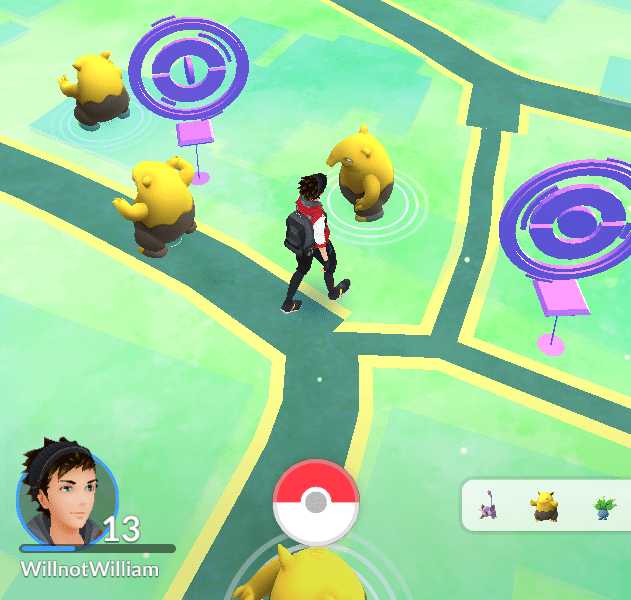Pokémon GO Is a Window into the Future

The world is crazy for Pokémon GO, Niantic Labs’ augmented reality game for iOS and Android.
Stitching together a few core mobile device functionalities, the game creates an experience unlike most games to ever hit the market (Ingress, a precursor to Pokémon GO, was launched in late-2013 but gained limited traction).
The Promise of Mobile
In 2007, Steve Jobs unveiled three new Apple products on one day: a touchscreen music player, a phone and a portable internet communications device, all of which were really components of one item: the iPhone. In the nine years since, cameras and GPS were added, but functionalities largely remained siloed.
GPS underlies many of the best features of smartphones, including maps, location-based push notifications, a couple dating apps, and a few underused components of social media apps intended to connect you with nearby friends.
Smartphones provide standard mobile internet connectivity but can communicate and share information via technologies like mesh networking, too.
Why Pokémon GO is a big deal
In the not-too-distant-future, tech-enabled experiences will escape the confines of the device and increasingly bridge the physical and digital worlds, bringing online communication, information sharing, social networking, and yes, gaming, to real life.
The technical capabilities have been present in devices for at least five years, and their power is now finally being unleashed.
Under the guise of a child-friendly video game, Pokémon GO represents the arrival of this blended online/offline future, delivering on the revolutionary promise inherent in mobile devices for some time now.

What’s next
The screen was invented in the early days of computers as a way to ease user interaction with the machine.
Screens are useful, but they’re not natural interfaces for humans. They’re relevant now because they’re the most intuitive way we’ve found to interact with computers, but this will soon change.
As technology advances, screens will disappear. In some cases, they will be replaced by voice, in other cases, by… who knows? Semi-transparent, mirrored headsets? Glasses? Neither of these sound like huge improvements over screens, powerful as they may be. Contact lenses? Implanted chips?
In any case, the separation of online and offline inherent in screens will disappear. Computer experiences will transcend the current hard boundary between digital and real.
Pokémon GO is the first meaningful example of technology that bridges the online/offline divide, with players moving around a map based on real-world GPS positioning and playing a game overlaid on physical surroundings via a screen.
As new interfaces are developed to replace the screen, the online/offline distinction will fall away. This change will occur not just in games, but it social networking, business-related areas like meeting scheduling and networking, and in personal activities like shopping, travel and discovery.
Pokémon GO is rough around the edges and surely doesn’t take full advantage of what mobile devices can do, but it’s an excellent beta for the future.
The applications that create the richest experiences going forward will incorporate more functionalities than the launch version of Pokémon GO, including increased interaction between avatars in the virtual world based on proximity and interaction in the physical world.
In Pokémon GO, this functionality is relevant for gaming, but the same concept will move to social networking and beyond. Social media will finally become social, supporting real human experiences and relationships in the physical world.
Marketing & Commerce
If it were all about having fun or being productive, the augmented reality (AR) phenomenon might be short-lived.
Luckily for AR, the real power of the technology, especially when combined with mobile, lies in supporting the future of advertising, marketing, e-commerce and a wide range of virtual expert and skill transfer solutions.
In the case of Pokémon GO, what may look like a video game is also a powerful local marketing and e-commerce tool.
Never before in history have physical businesses been able to more quickly reach — and convert — local customers. AR-enabled applications could become for local shops, bars and restaurants what Amazon is for goods manufacturers.
Today, a business can make a small in-game purchase in Pokémon GO and ten minutes later see new potential customers on its premises. Deals and incentives can turn those individuals into paying customers. Not even Google or Facebook are as effective for many small businesses.
As new technology eliminates the online/offline divide, AR-driven applications will create new advertising, promotional and conversion opportunities for businesses of all sizes.
The future arrived overnight, disguised as a fantasy video game, but it’s likely here to stay.


